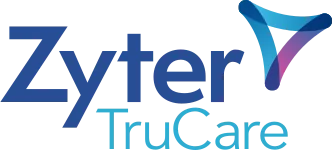- Shannon Smith, Assistant Vice President of Clinical Success
As healthcare costs continue to climb, the need for health plans and other risk-bearing entities to shift from reactive to proactive management has never been more urgent. U.S. healthcare spending is projected to reach nearly $6.2 trillion by 2028, creating pressure to adopt strategies that not only address immediate healthcare needs but also anticipate and mitigate future risks.
Economic constraints are accelerating the shift toward more effective, less costly population health management models that leverage AI-driven predictive analytics, agentic AI, and clinical business process outsourcing (BPO) services to enhance program effectiveness while reducing program costs and mitigating financial risk. These models are essential for managing both current and future healthcare demands, particularly as reimbursement rates continue to be volatile. Recent changes in Medicare Advantage capitation rates and payment policies have introduced further uncertainty, making it more difficult for health plans to forecast revenue and allocate resources effectively. At the same time, rising operational costs and shifts in Medicaid enrollment are adding financial strain, making it imperative for risk-bearing entities to adopt new strategies for cost containment while ensuring quality care for their members.
As financial pressures intensify, the focus is no longer on whether to invest in AI and automation, but how to deploy them strategically. AI-powered predictive analytics, combined with clinical BPO services that integrate expert decision-making into care management, offer a scalable and proactive approach to improving outcomes while reducing costs. AI-driven care coordination is already streamlining workflows, easing administrative burdens, and enhancing risk stratification for early intervention. AI-enabled decision support tools are also transforming prior authorization and care gap identification, ensuring that health plans can act swiftly to prevent adverse health outcomes.
Gartner research suggests that using advanced analytics in healthcare can reduce costs by up to 25% by improving efficiency and patient outcomes. As risk-bearing entities navigate growing financial and operational challenges, the ability to anticipate risk, automate interventions, and optimize care coordination through AI and clinical BPO services will be essential to maintaining financial stability and improving care delivery.
Enhancing Care Through Prospective Risk Stratification
Risk stratification is already a critical tool in healthcare management, categorizing patients into high, moderate, and low-risk groups based on comprehensive data analysis. This enables healthcare organizations to allocate resources effectively, ensuring interventions proactively manage the greatest health risks and prevent high-risk conditions from escalating. Studies show that proactive management significantly reduces the likelihood of moderate-risk patients becoming high-cost. Additionally, targeted interventions have been shown to reduce this risk by up to 30% within a five-year period.
A key opportunity for risk stratification is rising risk populations—individuals who are not yet classified as high-need or high-cost but are on a trajectory to become so. These individuals often have chronic conditions, such as type 2 diabetes, hypertension, or early-stage heart disease, that remain manageable in the short term but are at risk of worsening without proper intervention. By identifying these populations early, health plans can implement targeted strategies that prevent disease progression, reduce unnecessary hospitalizations, and lower long-term costs.
Traditional risk stratification models often rely on claims data, analyzing healthcare utilization only after services have been rendered and paid for. While this retrospective approach can help categorize patients into risk tiers, it does not allow for early intervention. Integrating advanced data analytics and AI shifts risk stratification from reactive to predictive, allowing health plans to detect early indicators of deterioration before costly interventions are necessary. AI-driven predictive models analyze not just claims, but also prior authorization trends, EHR data, and real-time clinical inputs to identify patients exhibiting patterns associated with worsening chronic conditions. By incorporating these real-time and forward-looking insights, health plans can act before health declines lead to costly hospitalizations.
In addition to identifying individuals at risk, a population-level approach is essential for predicting rising risks before they escalate across an entire population. AI-driven population health analytics help health plans detect groups on a trajectory toward higher healthcare utilization by analyzing claims data, social determinants of health (SDOH), lifestyle behaviors, and access to care. These insights can highlight communities where delayed cancer screenings, limited primary care access, or high rates of metabolic disorders contribute to long-term risks. By flagging geographic regions or demographic groups in need of proactive care based on rising risk signals, AI enables health plans to deploy targeted interventions, expand access to services, and implement proactive care strategies that reduce chronic disease burdens before they worsen across entire populations.
A more predictive and adaptive approach to risk stratification not only supports effective current care management but also sets the foundation for the next critical step: leveraging AI-powered automation and clinical expertise to proactively manage care for individuals with rising risks. By integrating clinician-led care coordination, automated prior authorization, remote patient monitoring, AI-driven alerts and other components of a complete care management process into a seamless patient-focused workflow, health plans and other managed care organizations can speed up access to the most appropriate care, including care that will mitigate the development of conditions for which the individual is at rising risk of developing.
This approach allows health plans to identify both individuals and entire populations on the verge of becoming high-risk, adjust interventions in real time, and deploy targeted, data-driven strategies to prevent conditions from escalating—ultimately improving outcomes and reducing avoidable healthcare costs.
How Can AI Bridge the Gap in Managing Rising Health Risks?
Managing rising risk populations requires more than just identifying individuals at potential risk—it demands early, precise intervention before conditions escalate. AI and predictive analytics enable health plans to move beyond traditional risk assessment by delivering deeper, data-driven insights into both individual patient health trajectories and broader population trends. These technologies analyze a broad spectrum of data, including EHRs, claims history, social determinants of health, and lifestyle factors, allowing for a more accurate understanding of where risks are emerging—both at the member level and across entire populations.
By leveraging predictive models, health plans can implement targeted interventions that help prevent conditions from worsening. For example, AI-driven analytics can flag early warning signs of diabetic complications, prompting timely medication changes or lifestyle modifications before costly hospitalizations occur. At the same time, AI can streamline prior authorization approvals for evidence-backed treatments, ensuring at-risk patients receive timely care without administrative delays.
The advantage of AI in managing rising risks lies in its ability to automate complex decision-making, reducing manual burden on care teams while improving response times. By integrating predictive insights with automated prior authorization workflows, AI ensures that critical services—such as specialist referrals, diagnostic tests, and medications—are approved efficiently, preventing delays that could lead to adverse health outcomes. Unlike traditional analytics methods, machine learning can process vast and complex datasets that go beyond historical trends, allowing health plans to predict future risks with greater accuracy. By continuously analyzing claims, EHRs, and real-time clinical data, machine learning models identify emerging patterns that might otherwise go unnoticed—enabling earlier, more targeted interventions that improve patient outcomes and reduce costs. These models continuously refine predictions by learning from real-world patient data, making interventions more precise and effective over time.
AI also enhances care coordination by ensuring health plans and clinical teams have access to real-time insights, enabling proactive action that improves patient health and reduces unnecessary utilization. With the ability to automate approvals for lower-risk cases and escalate only the most complex requests for review, AI-driven prior authorization not only streamlines workflows but also improves access to necessary care, reducing friction for both patients and providers.
For health plans and other risk-bearing entities, the integration of AI-driven risk assessment and clinical BPO services is not just about predicting risk. As healthcare complexity increases, it requires a system that can both manage technology-driven automation and support clinical expertise. Clinical BPO services work in tandem with AI-powered decision-making, allowing health plans to leverage a combination of automation and human-led clinical oversight. This approach ensures that while AI streamlines administrative tasks and optimizes workflows, expert clinical teams remain engaged in high-value interventions—where human expertise is critical to guiding care decisions. By anticipating care needs, automating approvals, and enabling proactive interventions, AI and clinical BPO together allow health plans to prevent avoidable health declines, optimize resources, and improve both patient outcomes and cost management.
How Can a Health Plan Enable this Kind of Program Without Significant Cost and Risk of Failure?
If all this seems daunting – there’s an emerging model that enables AI-driven, clinically-managed technology and services with greater impact at lower cost than traditional health plan care management programs. Clinical BPO, which combines clinician expertise and related management services with an AI-enabled, outcomes-focused population health management platform, can drive a forward-thinking rising risk management program In this model, an organization with these combined capabilities can perform population health management services at a fixed PMPM cost, for both the administrative cost of the program and the medical costs for the individuals whose health is managed in those programs. The benefits of a health plan or other risk-bearing managed care organization include:
- Access to a large cadre of clinical experts across multiple specialties
- Fully automated care management processes
- AI-driven capabilities, such as agentic AI and predictive modeling
- Reduced administrative costs
- Offloading of medical cost risk
How Does Zyter|TruCare Anticipate and Manage Health Risks?
Zyter|TruCare empowers health plans and other risk-bearing entities to evolve beyond traditional care management by leveraging AI-driven analytics, automation, and clinical expertise. Our platform proactively identifies health risks, automates interventions, and optimizes care coordination to deliver effective outcomes while streamlining administrative tasks.
- Proactive Risk and Care Management: Zyter|TruCare’s predictive analytics pinpoint early signs of adverse health conditions in individuals and populations. By deploying automated, targeted interventions early, we facilitate proactive care that enhances patient outcomes and reduces healthcare costs. Integrated within these processes are high-value clinical BPO services and clinical consulting services to enhance care delivery and administrative efficiency. By incorporating claims data and risk stratification models, our platform enables health plans to identify care gaps, automate workflows, and support regulatory alignment, ensuring compliance while reducing avoidable utilization.
- Comprehensive Decision-Making and Health Support: Our platform provides real-time insights that enhance decision-making capabilities, ensuring timely and precise care. AI-driven automation supports next-best actions for authorizations, appeals, and grievances, helping to streamline complex processes while improving care coordination. Additionally, our system extends comprehensive support for mental and behavioral health, integrating remote monitoring capabilities to proactively address patient needs.
- Enhanced Patient Engagement: Zyter|TruCare improves patient engagement by extending platform capabilities directly to the individual member or patient. Our solution includes consolidated remote patient monitoring (RPM), in that a member’s devices can be aggregated and monitored on a single case manager dashboard. We also enable secure chat between a case manager, member, and the member’s care team to engage the individual directly in their care decisions and with proactive, tailored care recommendations.
Zyter|TruCare equips health plans and other risk-bearing entities with the tools to proactively manage risk, enhance compliance, and streamline care coordination through automation, AI-powered analytics, and clinical expertise. Our approach ensures that health plans can identify rising risks, reduce avoidable healthcare costs, and improve patient outcomes while maintaining operational efficiency.
Getting Ahead with Zyter|TruCare
Zyter|TruCare enhances health management by integrating sophisticated AI analytics to anticipate and address health risks before they escalate. This proactive approach is crucial for health plans aiming to manage outcomes effectively and control costs. Our approach ensures precise, timely interventions that enhance patient care and maximize resource efficiency.
As healthcare entities face the ongoing challenge of shifting from reactive to anticipatory practices, Zyter|TruCare provides the tools necessary to not only foresee but also shape health outcomes. Embrace our advanced solutions to lead in proactive health management.
Retroactively managing risk is no longer enough. It’s time to anticipate and act. Zyter|TruCare helps health plans stay ahead with AI-driven insights, automation, and clinical expertise. Contact us to see how proactive risk management can improve outcomes and reduce costs for your organization







